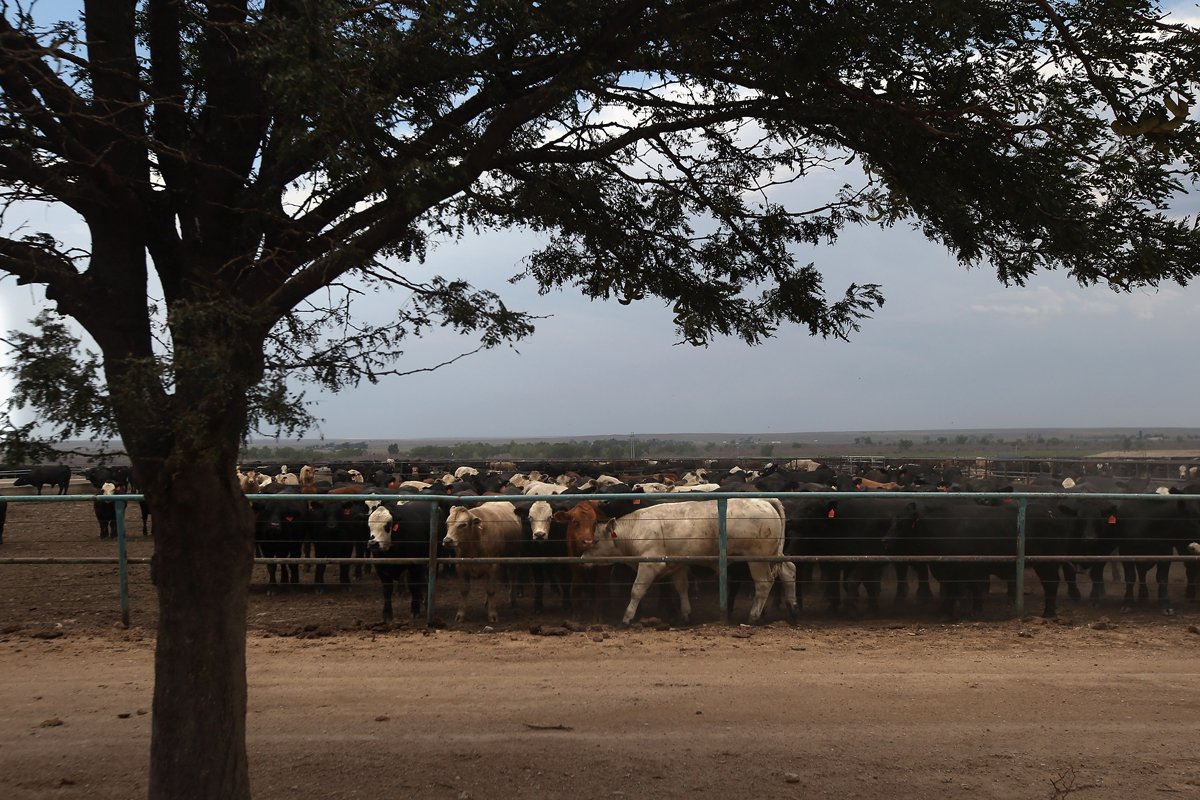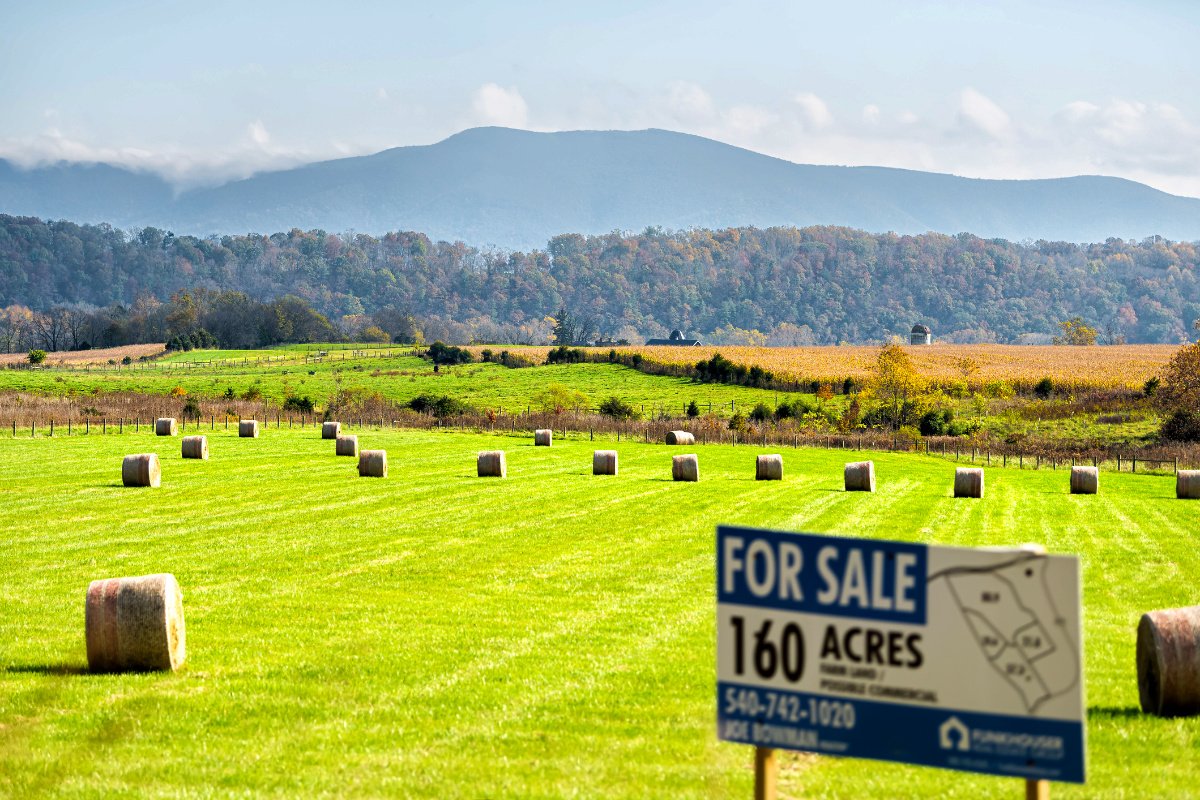The EPA’s annual emissions report points to declines in cattle numbers and fertilizer use, data that could inform major climate events this fall.

The EPA’s annual emissions report points to declines in cattle numbers and fertilizer use, data that could inform major climate events this fall.
September 11, 2024

Cattle crowd inside a feedlot operated by JBS Five Rivers Colorado Beef on August 22, 2012 near Wiley, Colorado. (Photo by John Moore/Getty Images)
The fall has become the season for reviewing climate progress, book-ended by two major climate summits. First comes New York City Climate Week, held between September 22 and 29, followed by the most important global climate event of the year, the 2024 United Nations Climate Change Conference (COP29), which will be held in Baku, Azerbaijan, from November 11 to November 22. There, global leaders will gather to fulfill the legally binding promise of the Paris Agreement: to keep worldwide emissions at a livable threshold.
In recent years, curbing emissions from agriculture and the broader food system has become a bigger piece of the conference’s programming. And this year, the most influential group in American agriculture has been pointing to big strides made.
“The impact that the drought is having on pasture is forcing the culling of cattle and reducing the cattle herd.”
The U.S. Environmental Protection Agency (EPA) annual emissions inventory report showed that emissions from the agricultural sector dropped by nearly 2 percent, falling from 10.6 to 9.4 percent of total greenhouse gas emissions between 2021 and 2022—the sharpest drop of all sectors in 2022. In response, the American Farm Bureau’s president, Zippy Duvall, attributed the shift to U.S. farmers adopting climate-friendly practices through “voluntary and market-based programs that support farmer efforts in sustainable agriculture practices.”
However, the report doesn’t support the conclusion that a bump in conservation practices drove the drop in emissions. Instead, while there is plenty of uncertainty, the most likely causes are fewer cattle burping methane and less fertilizer use. Concentrated feedlot cattle farming and fertilizer production are among the biggest drivers of emissions from agriculture.
It’s a significant conclusion, because in the past, industry groups have fought all efforts to draft climate policy around reducing meat and dairy consumption and chemical fertilizer use. Going into climate event season, with the clock ticking even louder, that could happen again.
Duvall is right about farmers adopting valuable conservation practices. For example, many more are planting cover crops, with acreage increasing by 17 percent between 2017 and 2022. But despite the proven environmental benefits of these practices, their real climate impact is still in question.
However, the impact of reducing methane is well understood. And in its report, the EPA explicitly states that the drop of methane emissions was “largely driven by a decrease in beef cattle populations.” Through no fault of their own, ruminant animals, like cattle and sheep, exhale methane as they digest their food. Known as enteric fermentation, this is a top driver of human-related methane emissions in the U.S. In 2022, these emissions decreased by 2 percent, contributing to the overall drop.
Why were there fewer cattle? The decline in numbers isn’t due to any regulations on methane or herd size—a frequent Republican talking point—but rather the impacts of climate change. The record-breaking drought since 2022 has dried the landscape and shrunk the available grassy pasture for raising cattle, explained Ben Lilliston, the director of rural strategies and climate change at the Institute for Agriculture and Trade Policy. As a result, farmers have had to make hard choices to prevent the overgrazing of this limited green pasture.
“The impact that the drought is having on pasture is forcing the culling of cattle and reducing the cattle herd,” said Lilliston. “So, when you have fewer cows, you’re going to have fewer enteric [fermentation] emissions coming from the cow itself.”
And it’s not just methane. The EPA also reported lower nitrous oxide emissions from feedlot manure, captured in manure lagoons, “which are major sources of both methane and nitrous oxide,” said Lilliston. “So, when you reduce the cattle herd, you affect both those sources of emissions.”
This relationship has generally held true over time. The EPA has observed a consistent relationship between the size of cattle herds and fluctuations in methane emissions from enteric fermentation. As the report states, “this increase in emissions from enteric fermentation from 1990 to 2022 generally follows the increasing trends in cattle populations.” The agency pointed to how “emissions increased from 2005 to 2007, as both dairy and beef populations increased.” Now, as cattle herds decrease, that trend has reversed.
The multi-year drought continues to devastate ranchers, which could mean further declines in emissions. “Based on USDA statistics, cattle populations have continued to decrease in 2023 and 2024, which tend to drive methane and nitrous oxide emissions from the enteric fermentation and manure management categories as described in the GHG Inventory,” wrote an EPA spokesperson in an email.
The drop in nitrous oxide emissions could also be driven by less fertilizer use, related to the dramatic surge in fertilizer prices in 2021 and 2022, beyond what farmers could afford. This coincided with Russia’s attack on Ukraine, which disrupted fertilizer supply chains. In response, the U.S. Department of Agriculture (USDA) noted that farmers made different business calculations: “Some producers may have chosen to reduce the overall acreage planted, while others chose to maintain acreage but change crop mix or modify other practices,” the USDA commented in a 2022 report.
This is likely especially true for farmers growing corn, the most widely planted crop in the U.S., primarily grown to produce ethanol. “Corn is the main driver of nitrogen fertilizer use,” said Lilliston. But as fertilizer prices surged, “a lot of commodity farmers responded by planting more soybeans, which doesn’t require as much fertilizer,” he noted.
Rather than a permanent shift, this suggests a more temporary fluctuation. Lilliston expects nitrous oxide emissions to rebound in the EPA’s next report, as fertilizer prices leveled in 2023 and the U.S. produced a record corn crop.
“Ultimately, it seems primarily the big story is that there’s less production of U.S. agriculture and [therefore] less emissions. Farmers aren’t necessarily producing food in much more climate-smart ways than they were in 2021, just producing a little bit less of it,” said Dan Blaustein-Rejto, the director of food & agriculture at the Breakthrough Institute.
“The EPA report is really not meant to assess the impact of conservation programs or specific farming practices,” added Blaustein-Rejto. “[It] certainly is not looking at the effect of specific voluntary programs or other efforts,” he said.
In general, agricultural emissions experts interviewed for this article agreed that the EPA’s annual greenhouse-gas emissions inventory reflects such a brief snapshot of time that it can be hard to tell if it indicates a larger shift in the food system or a fluctuation based on agricultural market changes and disruptions. The EPA also continually refines its methodologies for calculating emissions, which can make it hard to compare smaller shifts in emissions included in the reports.
‘There’s so much uncertainty in those predictions that I would hesitate to really read too much into any small variation from year to year, outside of demonstrable changes and practices out on the landscape,” said Steven Hall, a professor in the Department of Plant and Agroecosystem Sciences at the University of Wisconsin-Madison. “The emissions inventories published by EPA are subject to substantial uncertainty.”
“I think the EPA is doing an admirable job at trying to estimate this,” he added. “It’s sort of an impossible task.” The report, perhaps, most clearly shows that we still have work to do in transforming our systems for growing food.
And it points to two simple things that policy wonks and world leaders could be spending more time debating: How climate policy should and could tackle emissions from beef production and fertilizer use. “Unfortunately, the 2022 reductions were not part of a planned strategy to support farmers in a transition toward less emitting, more resilient agricultural systems,” said Lilliston in a commentary on the EPA report. “Instead, the reductions were the result of sudden shocks that caused enormous harm to farmers and their animals. Volatile prices make it nearly impossible for farmers to plan ahead or transition to more diverse cropping systems that require less fertilizer use.”
Going forward, he argued, policy conversations should prioritize transitioning away from industrial animal agriculture, which also depends on fertilized corn for feed. “Instead, policymakers continue to defer to the wants of powerful global grain and meat companies, while climate-related events, such as drought, wildfires, and floods, warn us that change is coming, ready or not.”

October 9, 2024
In this week’s Field Report, MAHA lands on Capitol Hill, climate-friendly farm funding, and more.
October 2, 2024

October 2, 2024

October 1, 2024

September 24, 2024

September 18, 2024

Like the story?
Join the conversation.